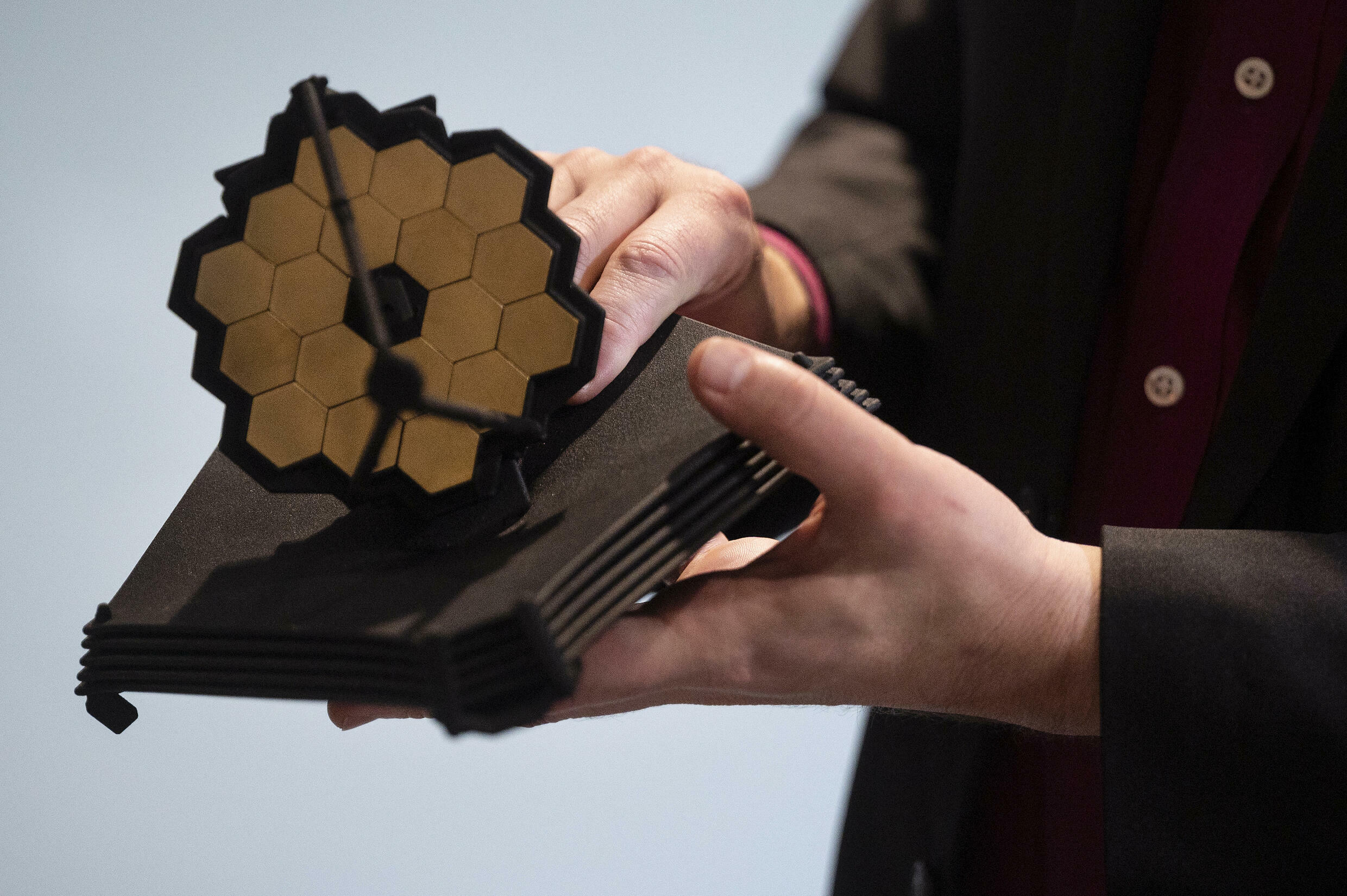Baltimore (United States) (AFP) – Excitement and tension: This is how Rusty Whitman says he will feel the 30 days ahead after the launch of the historic James Webb Space Telescope, now tentatively scheduled for Saturday.
From a secure control room in Baltimore, Maryland, Whitman and his colleagues will hold their breath when the telescope connects.
But this will only be the beginning.
In the six months following launch, Whitman and the team at the Space Telescope Science Institute will monitor the telescope 24 hours a day, making small adjustments to ensure it is perfectly calibrated for astronomers around the world exploring the universe.
But the crucial moment will be at the beginning of the mission: the telescope must be positioned on a precise trajectory, while simultaneously deploying its huge mirror and a larger lens hood. A very dangerous process.
“At the end of the 30 days, I can breathe a sigh of relief if we stay on schedule,” said Whitman, director of flight operations systems engineering.
Whitman leads the team of technicians who installed James Webb’s Control Room, a high-tech center with dozens of screens to monitor and control the spacecraft in real time.
In the front row, one person will have the ability to send commands to the $10 billion machine, which will eventually settle into an orbit more than 1.5 million kilometers away.
In other positions, engineers will monitor certain systems for anomalies.
After launch, telescope operations will be largely automated, but the team in Baltimore should be ready to deal with any unforeseen problems.
Over the course of dozens of simulations, the engineers trained how to perform the rapid diagnostics and troubleshooting developed by the team, as well as experts from Europe and California.
During one of those tests, the building had electricity cut off.
“It was totally unexpected,” Whitman said. People who didn’t know thought it was part of the plan.
Fortunately, the team prepared for such an event: a backup generator quickly returned power to the control room.
Despite preparations, Whitman worries that something might go wrong: “I’m nervous because we might forget something. I always try to think ‘What have we forgotten?'” “
Choose projects
In addition to its job of keeping James Webb running, the Space Telescope Science Institute, based at the prestigious Johns Hopkins University, manages who can use the expensive scientific instrument.
The telescope will operate roughly 24 hours a day, seven days a week, leaving just 8,760 hours per year to distribute to scientists clamoring for their chances of a pioneering discovery.
Black holes, exoplanets and star clusters – how do you decide which experiment has priority?
By the end of 2020, researchers from around the world had submitted more than 1,200 proposals, 400 of which were finally selected for the first year of work.
Hundreds of independent professionals gathered for two weeks in early 2021, online due to the pandemic, to discuss proposals and narrow the list.
The proposals were anonymous, a practice first launched by the Space Telescope Science Institute for the Hubble Telescope Project, which it also directs. As a result, many projects were chosen by women and scholars early in their careers.
“These are exactly the kind of people we want the observatory to use, because it’s about new ideas,” explained Klaus Pontopedan, James Webb’s chief science officer.
The time required for each monitoring project varies in duration, with some needing only a few hours and the longest around 200.
What will be the first pictures that will be revealed to the public? “I can’t say, it’s supposed to be a surprise,” Pontopedan said.
Early release of images and data will allow scientists to quickly understand the capabilities of the telescope and configure systems that work in unison.

“We want them to be able to do their scientific work with it quickly,” Pontopedan explained. “So that they can come back and say ‘Hey, we need to make more observations based on the data we already have.'”
Pontopedan, himself an astronomer, believes that the telescope will lead to many discoveries “far beyond what we have seen before.”
Prior to Hubble’s launch, no exoplanets (planets orbiting stars outside our solar system) had been discovered. Since then, scientists have found thousands.
What will the James Webb Space Telescope reveal next?
© 2021 AFP

“Creator. Devoted pop culture specialist. Certified web fanatic. Unapologetic coffee lover.”
